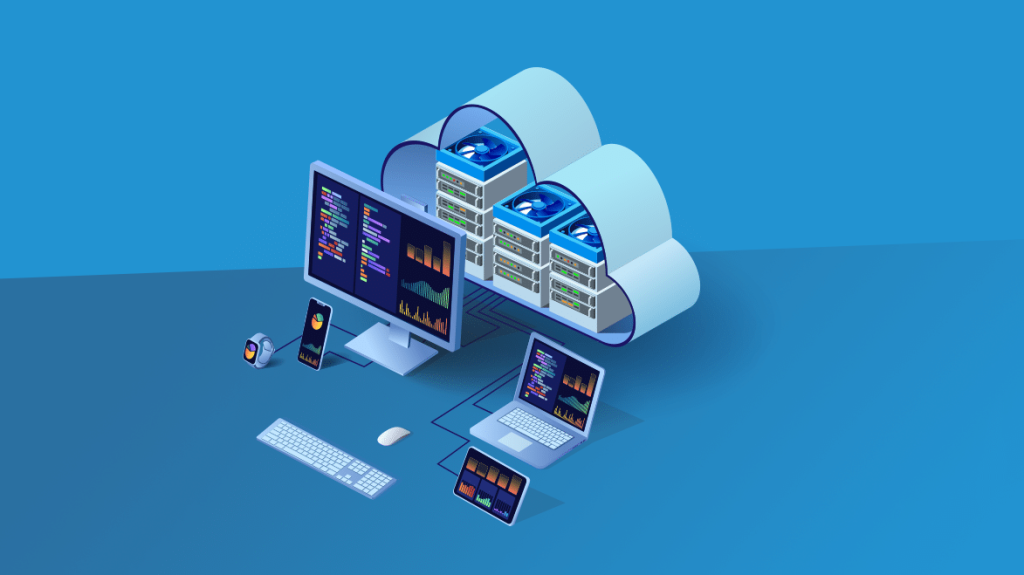What is VDI?
Virtual Desktop Infrastructure (VDI) enables virtualized desktops hosted on remote servers on the Internet. Reducing the need for hardware while improving flexibility, VDI offers practical benefits as well as a hefty return on investment. There is a strong business case to be made. According to the IDC, “The Business Value of VMware Horizon,” of January 2016, there is a 5-year return-on-investment of 413 percent. On average, the virtualized desktop costs 71 percent less to buy, deploy, support, maintain, and use over a 5-year period. This is on a per-device basis. Users spend 76 percent less time on device application log-ins. VDI enables companies to make full use of human capital while preventing many IT-related issues. We need all the help we can get to unlock the massive human assets such as talent, empathy, and creativity. You know, the things computers aren’t that good at. There are indeed great advantages to moving to a DaaS environment. There are also many opportunities for making mistakes along the way. Let’s take a look at the 4 most common pitfalls associated with VDI migration.
A TechRepublic article cites a lack of planning as a major pitfall of VDI integration. The article went on to report that companies failed to plan for enough resources. Don’t provision for today or tomorrow. Design an infrastructure that will serve your needs next year and for the years ahead. That article was from 2013. It is just as relevant today.

Decide what are the priorities in your VDI environment.
The problem with most VDI implementation is lack of planning. Internal stakeholders should begin with a comprehensive assessment of the IT environment. Also, consider the individual desktop environment. The VDI landscape has changed over the years. Planning and project management are the key to a successful VDI adoption. The initial steps start with an internal dialogue. It’s a good idea to bring in outside expert advice early in the process. Each company is unique. There are different demands and different expectations. The time and effort put into VDI planning will pay incredible dividends for years.
Here are a few of the most common hurdles. They can be overcome when identified early.

A Common problem with VDI planning is wanting to include everything.
Don’t Try to Do Everything at Once
The first common issue in rolling out a VDI initiative is trying to do too much at once. This applies to both large and small environments alike. VDI does not look the same at any two companies.
Don’t try to include every attractive feature in your initial implementation. Be focused on meeting key objectives. And be selective. Understand the major features and benefits of VDI. But don’t try to include everything in the beginning. This will only slow down the process. It will also distract you from your key objectives. A white paper by VMware recommends taking a step back. Consider what you’re trying to do. Do this before you even think about IT requirements. Instead of diving straight into technical requirements, such as numbers of servers and sizing of WAN links, begin by exploring user needs, business drivers, and special requirements. These special requirements might include things like: compliance issues; high availability; disaster recovery plans, or even the need for the business to rapidly onboard large numbers of new users due to mergers or acquisitions.
Don’t get stuck on the age-old VDI question. For example, using non-persistent versus persistent desktops in their initial deployment.
A company may never deliver a useable VDI solution if they allow themselves to get stuck on an idea. Let’s say that you determine 99% of its VDI desktops will be non-persistent. Well, you need to know that you’re going to spend countless OpEx and CapEx funds.

Zero in on what’s most important to you in a VDI environment.
Narrow down what you need in the planning stage to get VDI in a solid usable state. Set-up your VDI on a set of lean criteria. You can make additions as you go.
Do an Effective Initial Assessment
The next hurdle is company-specific. It is also often overlooked due to the upfront cost and time. I am referring to the VDI assessment that should be a part of the planning. The VDI assessment is the discovery phase of the project. It will help you isolate and focus on what is most important for your business.
Identify who will be using the VDI solution. The assessment is two parts: discussion and analysis. Be sure the process includes all the stakeholders including those who will be using the virtual desktops. Getting them involved early in the design process will help manage expectations. It will also go a long way in nurturing the acceptance of the resulting VDI environment.

Bringing all the brains to the table will ensure the existing infrastructure is understood and all solution options are on the table.
Let’s use the example of an HR group that will be using VDI during the initial deployment. There is an initial interview. The agenda includes setting expectations of VDI. Begin by looking at how the company currently uses the computer environment.
Discussions along these lines will establish some parameters.
Do they generally only use a combined set of 4 applications? Do they work at varied times throughout the day? Do they only need a web browser and the ability to email clients on the company network?
You also need to do some data gathering of what traditional desktops are doing during the day. What are the applications used? What is needed for the machines to operate?
Most PCs are oversized with wasted resources. VDI is all about compute and storage density. Determining accurate sizing needs equals more cost savings. There are several tools that can do the 2nd part of this equation but don’t overlook the first.
Don’t Overlook Management and Support Responsibilities
This third point is around IT staff.
Who will be managing the new environment once the consultants have departed? Will you share this duty between existing desktop/infrastructure teams? Or will a new team arise to manage the entire solution? Decide this early on.
Manage a VDI environment requires an engineer who understands several key technologies. They sound know how these technologies affect the virtual desktop. These technologies include but are not limited to:
Networking
Know how users connect to the virtual desktop. Know where to troubleshoot problems like lost connections or poor performance
Compute/Infrastructure
Deep understanding of hypervisors and server infrastructure, depending on the vendor of choice
Security
Knowledge of security products will be inside the virtual desktops and in the network path of VD. This is for troubleshooting purposes.
Desktop Engineering
Basic knowledge for customizing Windows installations and troubleshooting.
Additionally, there are several other ancillary technologies that come in handy. These technologies include DNS, Active Directory, Application Packaging/Delivery, Load Balancing, and Storage.
These skills can come from various class training offerings. Many should come from experience. Knowing how all these different technologies work together in your environment is critical.
Larger companies own many of these technologies.
Separate teams manage them. It is crucial that all the stakeholders be aware of the impact of VDI.
Know who has ownership of the new VDI systems. Make sure there is buy-in from across your IT organization. This is important to establish in the beginning. Everyone needs to be on the same page. This will make training easier. can occur for those needing to ramp up.
This ownership and buy-in include first-line defenders like your typical service desk team. Let them know they’re responsible to field certain common VDI related issues as they come in. Provide education and resources to support them. Service and support is the key benefit of partnering with seasoned VDI consultants.
Don’t Forget the User Experience
As VDI deployment comes together, don’t forget about the user experience.

User experience is the final litmus test. How the user feels about the experience means the success or failure of VDI or DaaS.
Consider how things were before VDI. Chances are, your employees have been using similar pieces of hardware. They know how their workstation machines perform every day (good or bad). They’ll compare the new VDI environment to what they had before.
This goes back to the assessment stage. Understanding the proper-sizing and performance of each machine is important. It can mean the difference between successful adoption and one that isn’t. It’s also more than that.
If a user now has to login twice to access their Virtual Desktop they will complain. If the machine hangs when opening a video conference they will complain. If patches cause reboots on different days, they will complain. You want to make the change over to VDI as seamless as possible.
The experience should be better, not equal or worse than on a traditional desktop. Make sure you plan to provide the expected performance of each workstation. Allow for a tailored storage solution that is intelligent and optimized for VDI. Consider network crashes. If for whatever reason, they can’t access their virtual desktops, this can also be a problem. Here’s the point. Outside factors can contribute to the total experience on a Virtual Desktop. Many of these factors will be beyond your control.
The successful adoption of VDI means user acceptance. Deliver a desktop-like experience. It means proving the training and support necessary. Company-wide buy-in is key to the success of the whole program. It all begins with planning and making sure you have every brain at the table when that happens.











